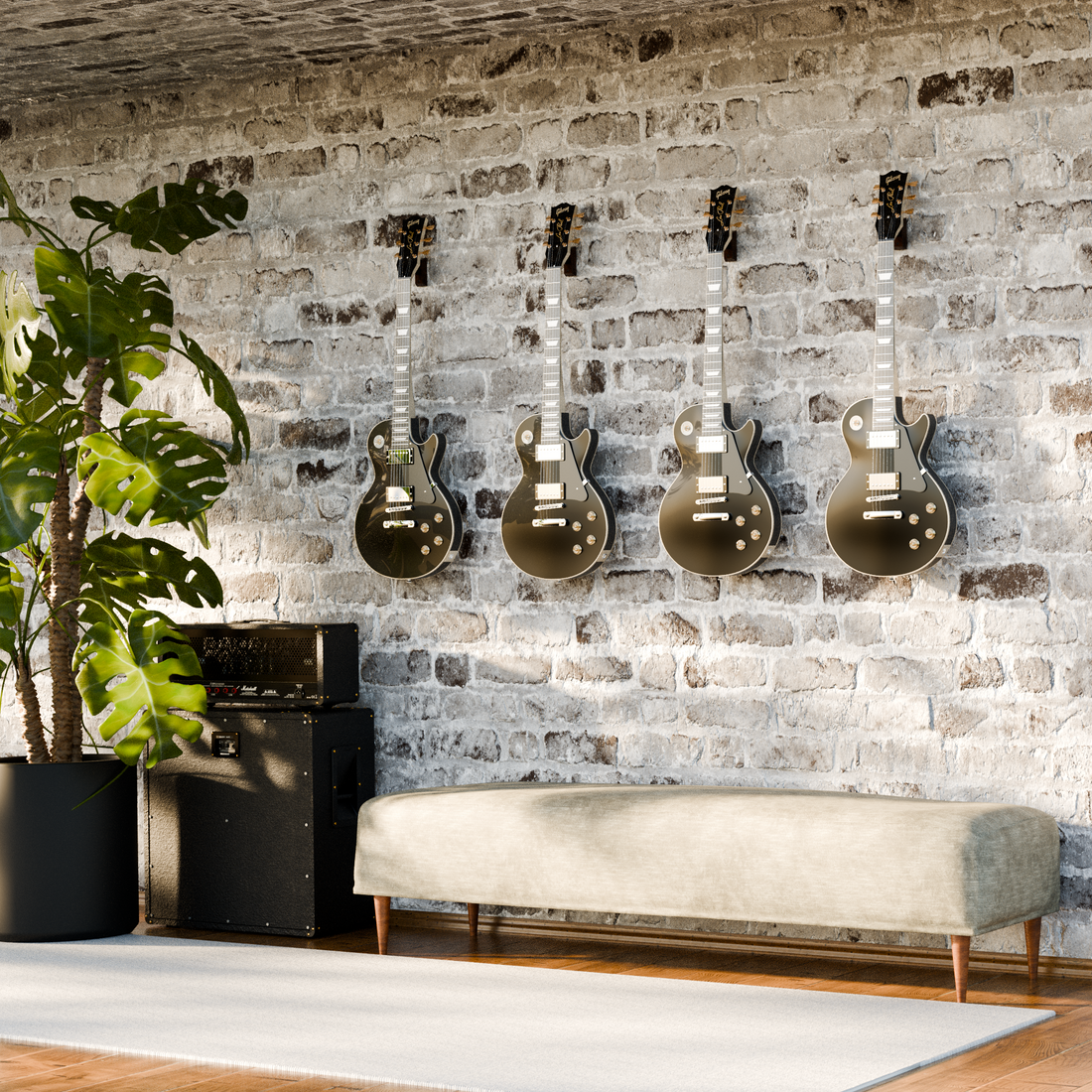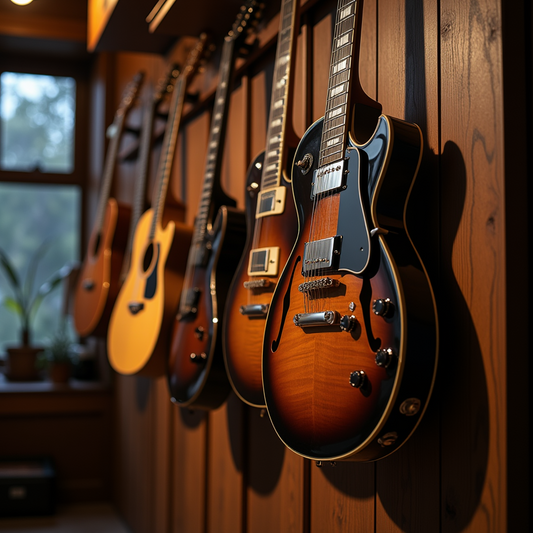
The Ultimate Guide to Choosing the Perfect Guitar Hanger
Share
For musicians, a guitar is more than just an instrument—it’s a source of creativity, emotional resonance, and often deeply personal memories. Whether you’re playing to unwind or performing in front of an audience, your guitar becomes an extension of yourself. Proper storage is essential not just to preserve its condition but also to honor its role in your life. A high-quality guitar hanger is a practical, elegant way to keep your instrument safe and stylishly displayed. This guide delves into everything you need to know about selecting the ideal guitar hanger.
Why Use a Guitar Hanger?
Storing your guitar correctly protects its physical condition while also enhancing its accessibility and aesthetic appeal. Guitar hangers are a simple yet effective solution for keeping your instrument secure and on display.
1. Protect Your Guitar
By hanging your guitar, you prevent common issues like scratches, dings, or warping that can occur when it’s left leaning against surfaces or stored improperly.
2. Save Space
Wall-mounted guitar hangers allow you to free up valuable floor space, making your room or studio feel more organized.
3. Showcase Your Instrument
A well-placed guitar hanger turns your instrument into an eye-catching piece of wall art that complements your living or working space.
4. Easy Accessibility
Hanging your guitar ensures it’s always within reach, encouraging you to play more frequently.
Types of Guitar Hangers
1. Wall-Mounted Guitar Hangers
These are the most common type of guitar hangers, known for their simplicity and efficiency. They securely hold your guitar by the headstock and are ideal for saving space.
2. Locking Guitar Hangers
Locking hangers add an extra layer of security with mechanisms that prevent accidental falls, making them perfect for high-traffic areas or valuable instruments.
3. Multi-Guitar Hangers
Designed for musicians with multiple instruments, these hangers can display several guitars at once, keeping them organized and accessible.
4. Free-Standing Guitar Racks
Although not wall-mounted, these racks are a great alternative for those unable to drill into walls. They’re portable and ideal for temporary setups.
Features to Look for in a Guitar Hanger
1. Build Quality
Durable materials like metal or hardwood ensure the hanger can safely support your guitar’s weight over time.
2. Padded Support
Protect your guitar’s finish with padded or foam-covered arms that cradle the instrument gently.
3. Compatibility
Choose a hanger that fits your guitar type—whether acoustic, electric, or bass—to ensure a snug and secure hold.
4. Easy Installation
Opt for a hanger with straightforward instructions and all necessary mounting hardware for a hassle-free setup.
Installation Tips for Guitar Hangers
1. Choose the Right Wall
Use a stud finder to locate wall studs for secure mounting. If attaching to drywall, heavy-duty anchors are essential.
2. Position at Eye Level
Mount the hanger at a height that ensures your guitar is both accessible and visually prominent.
3. Maintain Proper Spacing
If installing multiple hangers, leave enough room between them to prevent guitars from colliding.
4. Follow Manufacturer Instructions
Adhere to the provided guidelines for safe and effective installation.
Caring for Your Guitar While Using a Hanger
1. Avoid Direct Sunlight
Exposure to sunlight can damage your guitar’s finish and wood. Choose a location that minimizes direct light.
2. Monitor Humidity Levels
Maintain an environment with optimal humidity to prevent your guitar from drying out or swelling.
3. Inspect Hanger Regularly
Check for signs of wear or loosening to ensure your guitar remains securely mounted.
4. Clean Your Guitar
Wipe your guitar with a microfiber cloth before hanging it to remove dust and oils.
FAQs About Guitar Hangers
1. Can a guitar hanger damage my guitar?
No, as long as the hanger has padded arms and is installed correctly. For example, ClefArc guitar hangers are specifically designed to protect your instrument while maintaining its finish.
2. Are guitar hangers suitable for all guitar types?
Most hangers accommodate acoustic, electric, and bass guitars. ClefArc guitar hangers, for instance, are versatile enough to fit a wide range of guitar shapes and sizes.
3. Do I need special tools to install a guitar hanger?
Basic tools like a drill and screwdriver are typically sufficient. ClefArc guitar hangers include all necessary hardware, streamlining the installation process.
4. Can I hang a guitar on any wall?
It’s best to use stud walls or heavy-duty anchors for drywall installations. ClefArc guitar hangers come with detailed instructions for secure mounting on various surfaces.
5. Is a guitar hanger better than a stand?
Guitar hangers save space and enhance display options, while stands are portable and versatile for temporary setups. ClefArc hangers combine functionality and aesthetic design, making them a popular choice for many musicians.
Conclusion
Investing in a high-quality guitar hanger is a practical decision that enhances both the safety and presentation of your instrument. For instance, ClefArc guitar hangers provide durability, padded support, and sleek aesthetics, ensuring your guitar is always in its best condition. Whether you’re a seasoned musician or just starting out, a dependable guitar hanger is an essential accessory that complements your passion for music.



